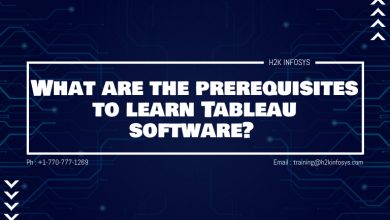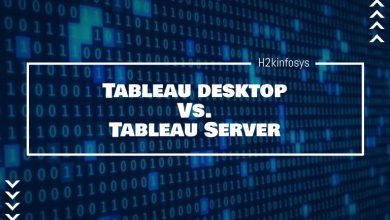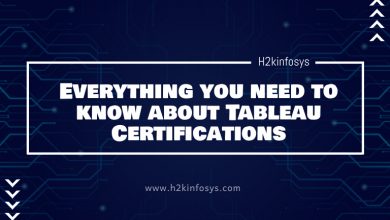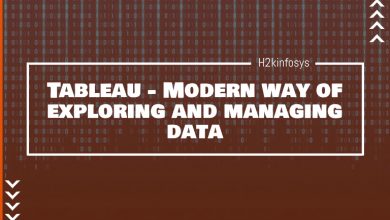What is Tableau AI?

The way businesses handle data has changed dramatically as a result of business intelligence, evolving from spreadsheets to interactive representations, extended reporting cycles to analytics that are self-service. However, a lot of people still find analytics to be too difficult.
The advent of generative AI is causing such a stir in a variety of industries, including data analytics, because it offers up a whole new range of experiences and chances for business insights. Nevertheless, as businesses try to determine which customers to target and issues to solve with this new technology, it’s imperative to establish and preserve trust in it.
Let’s look at how Tableau provides the next generation of reliable, AI-powered analytics to everyone in your company. Check out the Tableau online course to learn more.
What is Tableau AI?
With Tableau AI, any member of an organisation can achieve measurable business results via a fully integrated, next-generation portfolio of AI + analytics capabilities. Throughout the whole Tableau platform, trustworthy AI makes data analysis and insight consumption more straightforward and accessible for all users.
Tableau AI makes use of the sophisticated powers of generative AI (GAI), a subset of AI technology that lets computers recognize patterns, extract knowledge from data, and produce totally new things. Put differently, generative AI uses user input to produce information that makes sense on its own.
The upcoming Tableau generation reduces the barrier to data-driven insights by bringing the user experience into the domain of generative AI, enabling more people to access data when and when they need it.
Every business user can get intelligent, tailored, and contextual insights from Tableau AI directly into their workflow. With smart recommendations and in-product assistance, Tableau AI shortens the time it takes for data analysts to get insights and eliminates repetitive tasks—all built on a reliable foundation.
Tableau Pulse: Empowering business users
Most end users of analytics are leaders and business users whose primary job is not data analysis. Their workflows are efficient, and they want data to make them even more so. Additionally, their ability to research the business issues related to their professions is constrained.
The goal of Tableau Pulse is to proactively provide business users with smart, contextual, and tailored insights for metrics while they are working, addressing the “what,” “why,” and “so what” of the data that is most pertinent to their work and business.
How does Tableau AI power Tableau Pulse?
Although artificial intelligence (AI) cannot address every issue that business users have, it can greatly improve and expedite their capacity to consume metrics. Tableau Pulse’s AI-infused design personalised the user experience to maximise the timely and proactive distribution of information.
Insight Summaries is actually where generative AI first appears in Tableau Pulse. This is where the large language model (LLM) creates a natural language overview of the overall performance of those measures by analysing important insights found across the metrics a user follows. The time and effort needed to decide where to focus before deciding whether to delve deeper is greatly reduced by having this available at the top of the user’s Tableau Pulse homepage and delivered in digests.
Tableau Pulse uses many forms of AI in addition to generative AI to customise the business user experience. To ensure that customers can trust the findings they see, Tableau Pulse, for example, uses a variety of statistical and machine learning algorithms to produce the values required for Insight articles and visualisations. To provide consumers with more pertinent insights up front, Tableau Pulse’s insight ranking methodology gradually incorporates reinforcement learning. Semantic similarities are found using integrated embedding models, enabling users to obtain the desired insights whenever they’re needed.
In order to improve metric curation, close the insight-to-action loop, and further enhance and expand language delivery, Tableau Pulse will use AI in future iterations.
Einstein Copilot for Tableau: supercharging analysts
Salesforce introduced Einstein Copilot at Dreamforce 2023. It is a new conversational assistant driven by generative AI that works with any Salesforce application and is seamlessly integrated into work processes to significantly increase productivity.
Tableau’s Einstein Copilot enhances analyst productivity by providing contextual assistance for Tableau’s features. Analysts can enhance dashboard quality and visualisation with prescriptive assistance. To expedite the generation of dashboards, they can also automate known curation and repetitive procedures.
Einstein Copilot is an invaluable collaborator and astute assistant, helping users with everything from data discovery to suggesting the best method to create intricate analytical statements in normal language or convey a gripping visual story.
Who can benefit from Einstein Copilot for Tableau? Data analysts with years of Tableau experience, stewards of data who wish to work more productively, and others who are simply curious to learn more about the Tableau platform but are new to it. Throughout the platform, Einstein Copilot uses generative AI to assist users in creating visualisations, learning tools and features that speed up task completion, creating custom calculations for data preparation, and even automating metadata in their data catalogue.
How can I trust Tableau AI?
Although generative AI is exciting and has great potential, many people have legitimate worries about safety and trust.
Anyone who has dabbled with generative AI tools has undoubtedly discovered that these models are prone to “hallucinations,” or confidently providing incorrect responses. Generative AI has the ability to produce content that is offensive, hazardous, or that exhibits bias against particular ideas or people in addition to output that is merely erroneous. Throughout the usage cycle, businesses must have appropriate safeguards in place to monitor and guard against these hazards.
Einstein Trust Layer
With the Einstein Trust Layer, Tableau allays these worries and allows Salesforce applications to take use of generative AI without sacrificing data security or privacy confidence. Using a process known as dynamic grounding, any meaningful and accurate context found in the data is safely added to the prompts that are sent to the LLMs, whether they are created internally or by one of Tableau’s vetted partner communities. This raises the bar for control while enabling these models to produce more pertinent outcomes.
Applications developed on top of the trust layer can extract sensitive information processed by the LLM by using data-masking techniques. Next, model generations can be audited for compliance purposes and screened for toxicity and bias.
Most significantly, data is never used to train LLM models and is never kept somewhere other than Salesforce. Data is never saved or preserved for any reason; once an external model processes a prompt, both the prompt and the generation are forgotten. Tableau wants to guarantee the safety, security, and reliability of the entire process.
The best thing is that Tableau AI is based on the Einstein platform, which forms the basis for the reliability of all of our solutions.
Every generative AI request made by Tableau AI is translated into a prompt that contains precise directions for the work at hand as well as information based on verifiable facts. For instance, the creation of summaries using Tableau Pulse Insight Summaries is based on templated natural language insights. Deterministic statistical models, which are incapable of lying, are used to calculate the values in these insights. The prompt undergoes repeated testing to reduce the likelihood of hallucinations.
It intentionally summarises time-series insights devoid of sensitive or personally identifying information (PII). During the post-processing stages, if the system finds any name or value conflicts, it will reprompt the LLM to start a fresh generation. What was the outcome? Summarised ideas that are highly digestible and interesting. Methods such as these guarantee that Tableau products integrate generative AI in a reliable way.
However, no technology is infallible. Wherever and whenever generative AI is used, users should be aware of the dangers involved; Tableau has built-in reminders and feedback systems to help with this. Some features also let you start anew and create a different result, or you may alter the response immediately before applying it to your data.
Overall, Tableau never uses customer data to train any global models.
Tableau trusted AI: driving the business of tomorrow today
Artificial intelligence (AI), whether it be generative AI (GAI) or artificial general intelligence (AGI), has a lot of potential regarding the future. It is impossible to overestimate the significance of security, ethics, and appropriate application, however, as technology continues to push the envelope of what is possible.
By democratising data analysis and insight consumption, the Tableau suite of analytics tools enables trustworthy artificial intelligence (AI) by enabling all members of the organisation (from business users to data professionals) to fully utilise the potential of data and make timely, well-informed decisions.
Conclusion To learn more about Tableau, check out our online Tableau training.





